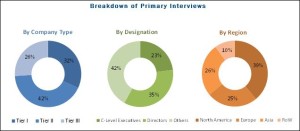The global surgical snares market size is expected to grow from USD 992 million in 2018 to USD 1255 million by 2023, at a Compound Annual Growth Rate (CAGR) of 4.8% during the forecast period. The major driving factors in the surgical snares market are increasing number for colon polypectomy procedures, growth of the endoscopic ASCs segment, and a rising preference for minimally invasive surgeries are the key factors.
The major surgical snares vendors include Olympus (Japan), Boston Scientific (US), Cook Medical (US), CONMED Corporation (US), Medline Industries (US), Medtronic (Ireland), Steris (US), Merit Medical Systems (US), and Avalign Technologies (US). These players have adopted various growth strategies such as acquisitions, new product launches and approval, expansions, to expand their presence in the global surgical snares market. These strategies adopted by major players from 2015 to 2018. This has helped them to innovate their offerings and broaden their customer base.
Olympus Corporation has established its presence in diversified markets; this has helped it to minimize risks and dependency on any particular business segment. The company has a strong product portfolio, which enables it to strengthen its position in the market. It has strong R&D capabilities, which provide it with a strategic advantage over its competitors. The company is focusing on R&D to meet the demands of the surgical snare industry. The company focuses on obtaining market-driven solutions to meet the increasing demand for surgical snare products.
Boston Scientific Corporation focuses on catering to surgical snare market. The company leads in terms of operational and financial strength and has focused on surgical snare market through both organic means. Boston has strong geographic presence in North America and Asia Pacific, which helps company to execute its sales and marketing activities. Company continuously focused on R&D investment, which helps company to expand its product portfolio through new product launches. For instance, in 2015, Boston Scientific launched Captivator EMR Device for endoscopic mucosal resection surgical procedure.
Recent Developments:
- In 2018, Cook Medical launched two new products, Cook Lead Extraction System and Cook Needle’s Eye Snare.
- In 2017, Merit Medical Systems acquired the critical care product portfolio of Argon Medical Devices and Catheter Connections, Inc. This helped Merits to broaden its product offerings and expand geographic presence in the surgical snare market.
Key questions addressed by the report:
- Who are the major market players in surgical snare market?
- What are the regional growth trends and the largest revenue-generating region for surgical snare market?
- What are the major drivers and challenges of the surgical snare market?
- What are the major applications of surgical snare?
- What are the major end user for surgical snare market?
To speak to our analyst for a discussion on the above findings, click Speak to Analyst



